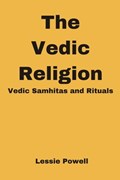Key Points in this Book
The Vedic Sa?hitas are the most esteemed literary works of the Aryans.
The Atharva Veda contains hundreds of original hymns dealing with an assortment of topics with differing concerns from the other three Sa?hitas.
Some scholars speculate that most Vedic deities are male due to an Aryan patriarchal social structure.
Indologist Max Müller speculated on the origin of religion. However, such speculation is currently unpopular due to lack of evidence to support such theorizing.
The "cosmic order" was important to Aryan civilization, as was the degree to which all aspects of life were aligned with it.
Sacrificial rites (yajña) were elevated in the Brahma?as to an importance that surpassed the gods, for it was believed that yajña itself maintained the cosmic order.
Tradition holds that any text with secret teachings is an Upani?ad. The Ara?yakas, forerunners of the Upani?ads, have similar associations with secrecy and philosophical speculation.
The Upani?ads are concerned primarily with the nature of Absolute Reality (Brahman), the true nature of the individual self (atman), and the relationship between the two.
The four genres of Vedic literature that are appended to each other (namely, the Sa?hitas, Brahma?as, Ara?yakas, and Upani?ads) are regarded as sruti (divinely revealed), whereas all other religious literature is regarded as sm?ti (traditional).
By the fifth century BCE, texts developed that were classified as primary and secondary appendages (a?ga) to the Vedas, namely the Veda?gas and the Upa?gas.
Since ancient Vedic times, astrology has been regarded as a vital supplement to the study of the Vedas themselves.
Ayurveda is considered supplemental to the Vedas, and this status ensures that Ayurvedic styles of medicine are well regarded and still widely practiced in India today.

